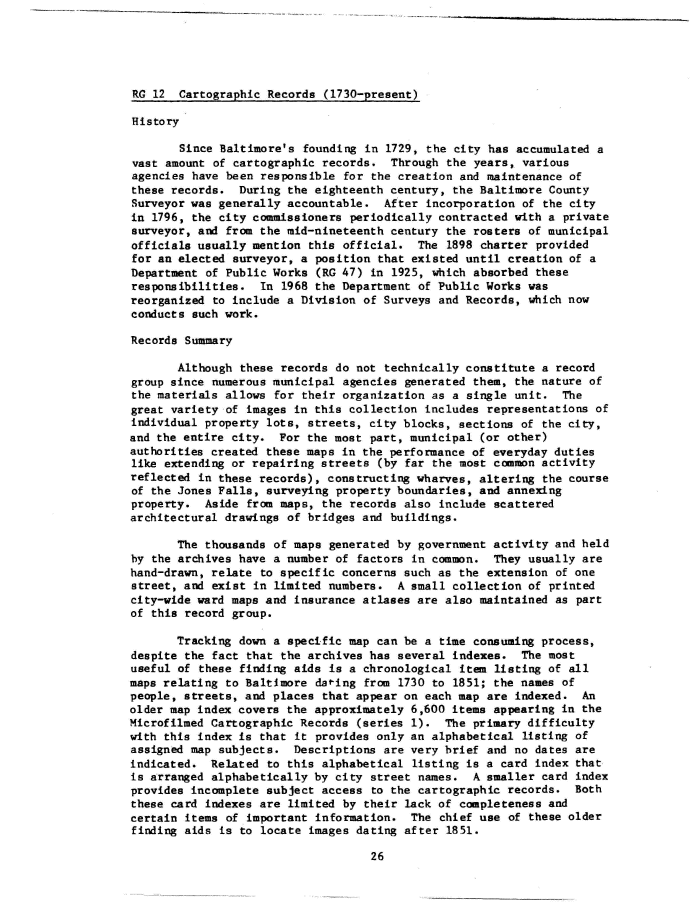|
RG 12 Cartographic Records (1730-present)
History
Since Baltimore's founding in 1729, the city has accumulated a
vast amount of cartographic records. Through the years, various
agencies have been responsible for the creation and maintenance of
these records. During the eighteenth century, the Baltimore County
Surveyor was generally accountable. After incorporation of the city
in 1796, the city commissioners periodically contracted with a private
surveyor, and from the raid-nineteenth century the rosters of municipal
officials usually mention this official. The 1898 charter provided
for an elected surveyor, a position that existed until creation of a
Department of Public Works (RG 47) in 1925, which absorbed these
responsibilities. In 1968 the Department of Public Works was
reorganized to include a Division of Surveys and Records, which now
conducts such work.
Records Summary
Although these records do not technically constitute a record
group since numerous municipal agencies generated them, the nature of
the materials allows for their organization as a single unit. The
great variety of Images in this collection includes representations of
individual property lots, streets, city blocks, sections of the city,
and the entire city. For the most part, municipal (or other)
authorities created these maps in the performance of everyday duties
like extending or repairing streets (by far the most common activity
reflected in these records), constructing wharves, altering the course
of the Jones Falls, surveying property boundaries, and annexing
property. Aside from maps, the records also include scattered
architectural drawings of bridges and buildings.
The thousands of maps generated by government activity and held
by the archives have a number of factors in common. They usually are
hand-drawn, relate to specific concerns such as the extension of one
street, and exist in limited numbers. A small collection of printed
city-wide ward maps and insurance atlases are also maintained as part
of this record group.
Tracking down a specific map can be a time consuming process,
despite the fact that the archives has several indexes. The most
useful of these finding aids is a chronological item listing of all
maps relating to Baltimore dat-ing from 1730 to 1851; the names of
people, streets, and places that appear on each map are indexed. An
older map index covers the approximately 6,600 items appearing in the
Microfilmed Cartographic Records (series 1). The primary difficulty
with this index is that it provides only an alphabetical listing of
assigned map subjects. Descriptions are very brief and no dates are
indicated. Related to this alphabetical listing is a card index that
is arranged alphabetically by city street names. A smaller card index
provides incomplete subject access to the cartographic records. Both
these card indexes are limited by their lack of completeness and
certain items of important information. The chief use of these older
finding aids is to locate images dating after 1851.
26
|

